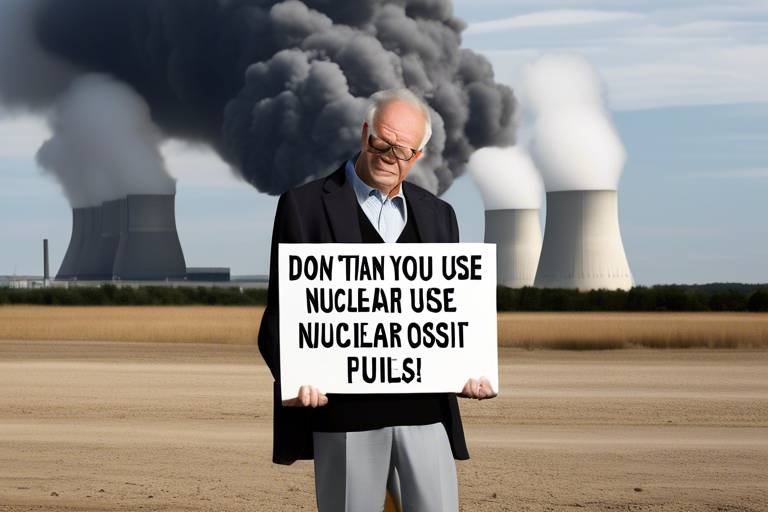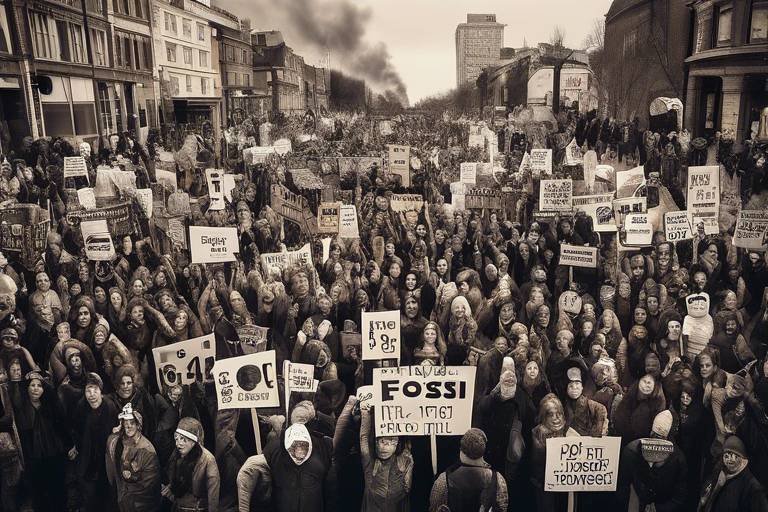How Does Nuclear Power Compare to Fossil Fuels?
This article explores the differences between nuclear power and fossil fuels, including their environmental impact, efficiency, safety, and economic factors, providing a comprehensive understanding of their roles in energy production.
Nuclear power and fossil fuels have significantly different environmental footprints. When we talk about emissions, nuclear power stands out as a cleaner alternative. Unlike fossil fuels, which release large amounts of carbon dioxide and other greenhouse gases into the atmosphere, nuclear power generates energy through fission, producing minimal emissions. This is a crucial factor in the fight against climate change.
Furthermore, the land use associated with these energy sources varies greatly. Fossil fuel extraction often leads to extensive land degradation, habitat destruction, and pollution of local ecosystems. In contrast, nuclear power plants require less land per unit of energy produced, making them more efficient in that regard. However, the ecological consequences of nuclear waste disposal remain a critical concern, as it poses long-term environmental risks.
When it comes to efficiency, nuclear power has a significant edge. A single nuclear reactor can produce a staggering amount of energy compared to fossil fuel plants. For instance, while a coal plant might require vast amounts of coal to generate electricity, a nuclear plant can produce the same amount of energy with a fraction of the fuel. This difference in resource utilization is essential for understanding how we can meet our growing energy demands without exhausting our natural resources.
The efficiency of energy conversion in nuclear reactors can be illustrated in the following table:
| Energy Source | Energy Output (MWh per ton) |
|---|---|
| Nuclear Power | 1,000,000 |
| Coal | 2.5 |
| Natural Gas | 8.5 |
Safety is paramount when discussing energy sources. The risks associated with nuclear power, such as potential accidents and the long-term management of radioactive waste, are often highlighted in public discourse. Events like the Fukushima disaster have left a lasting impression, raising questions about the safety protocols in place at nuclear facilities.
On the other hand, fossil fuels are not without their dangers. The extraction process can lead to catastrophic accidents, such as oil spills, and the combustion of fossil fuels contributes to air pollution, which poses significant health risks. It's a complex comparison, but one thing is clear: both energy sources have their safety challenges that need to be addressed.
The economic viability of energy sources influences their adoption. The initial costs of building nuclear power plants are substantial, often running into billions of dollars. However, once operational, these plants can produce energy at a lower cost compared to fossil fuels over time. This long-term sustainability is a significant factor for governments and investors when considering energy projects.
In contrast, fossil fuel markets are often subject to price volatility, influenced by geopolitical factors and environmental regulations. This unpredictability can make fossil fuels a less reliable long-term investment. The following list outlines key economic considerations:
- Initial Investment: High for nuclear, variable for fossil fuels.
- Operational Costs: Generally lower for nuclear once established.
- Market Volatility: Higher for fossil fuels due to external factors.
Public opinion plays a significant role in energy policy. Many people view nuclear power with skepticism, often due to historical events and media representation. The fear of radiation and catastrophic failures can overshadow the benefits of nuclear energy. Conversely, fossil fuels are often seen as a more traditional and reliable energy source, despite their environmental drawbacks.
Education and outreach are crucial in shaping societal attitudes. Understanding the complexities and benefits of both energy sources can lead to more informed decisions and policies that reflect the needs of a changing world.
Regulations govern the operation of energy sources. In the case of nuclear power, strict safety standards and oversight are essential to prevent disasters. These regulations can sometimes slow down the development of nuclear projects, but they are necessary for public safety.
Fossil fuels also face regulatory scrutiny, particularly regarding emissions and environmental impact. However, the enforcement of these regulations can vary widely, leading to inconsistent practices in the industry.
Innovation drives energy efficiency and safety. Recent technological advancements in both nuclear power and fossil fuels have the potential to enhance performance and reduce environmental impact. For instance, new reactor designs aim to minimize waste and improve safety, while cleaner extraction technologies for fossil fuels are being developed to lessen their ecological footprint.
Understanding global energy trends is essential for future planning. As countries strive to meet energy demands while addressing climate change, both nuclear power and fossil fuels will play pivotal roles in the energy landscape. The shift towards renewable alternatives is also influencing how these energy sources are perceived and utilized.
The future of energy is a critical discussion point. As we transition to more sustainable energy systems, the roles of nuclear power and fossil fuels will continue to evolve. Economic, environmental, and technological influences will shape this transition, and it's essential to consider how these factors will impact our energy choices moving forward.
Q: What are the main differences between nuclear power and fossil fuels?
A: The primary differences lie in their environmental impact, efficiency, and safety concerns. Nuclear power emits minimal greenhouse gases, while fossil fuels are significant contributors to air pollution and climate change.
Q: Is nuclear power safe?
A: While nuclear power has inherent risks, advancements in technology and strict regulations have improved safety significantly. However, public perception often remains cautious due to past incidents.
Q: What are the economic implications of nuclear power versus fossil fuels?
A: Nuclear power requires a high initial investment but offers lower long-term operational costs. Fossil fuels are subject to price volatility, making them less reliable as a long-term energy source.
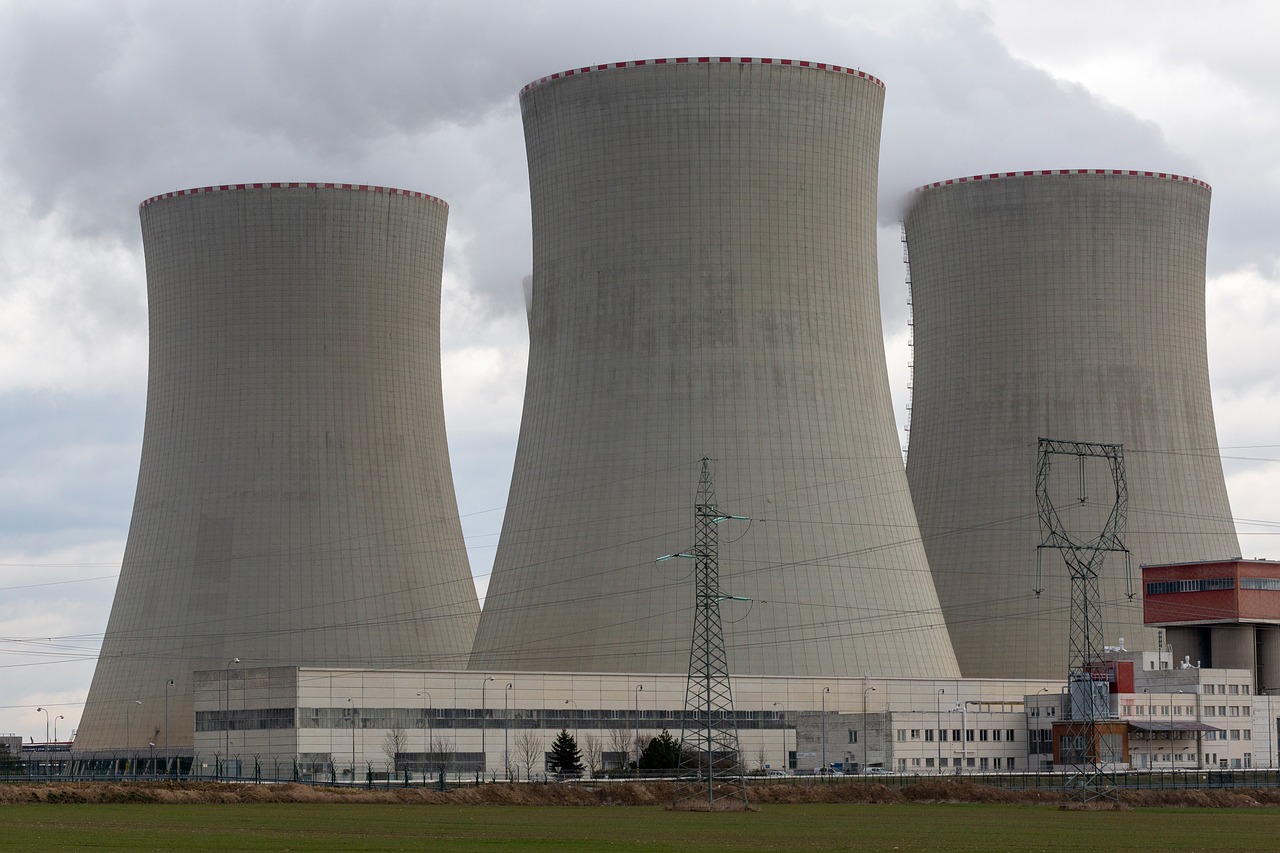
Environmental Impact
Nuclear power and fossil fuels stand on opposite sides of the environmental impact spectrum. While both are pivotal in energy production, their footprints are starkly different. To start, let's talk about emissions. Fossil fuels, such as coal, oil, and natural gas, release a considerable amount of carbon dioxide (CO2) and other greenhouse gases into the atmosphere when burned. This process significantly contributes to climate change and air pollution, posing a severe threat to our planet's health. In contrast, nuclear power plants operate with minimal direct emissions. They harness the energy from nuclear fission, producing electricity without the combustion of fossil fuels, which means they emit virtually no greenhouse gases during operation.
Now, let's consider land use. Fossil fuel extraction often requires extensive land disruption, from drilling sites to coal mines, impacting local ecosystems. This can lead to habitat destruction and biodiversity loss. On the other hand, nuclear power plants require less land for the same energy output. A single nuclear facility can produce a vast amount of energy in a relatively small area compared to fossil fuel operations. However, the land used for mining uranium, the fuel for nuclear reactors, can also have ecological consequences, though these are often less visible.
When we dive deeper into the ecological consequences, the differences become even more pronounced. Fossil fuel spills, like oil spills, can devastate marine and coastal ecosystems, while the extraction processes can pollute soil and water sources. In contrast, nuclear accidents, while rare, can have catastrophic effects on the environment, as seen in Chernobyl and Fukushima. These incidents release radioactive materials into the environment, leading to long-term contamination and health risks to both humans and wildlife.
In summary, while both nuclear power and fossil fuels have their drawbacks, the environmental impact of fossil fuels is generally more detrimental in terms of emissions and ecological disruption. Nuclear power, while not without its risks, offers a cleaner alternative in terms of air quality and greenhouse gas emissions. The challenge lies in managing the risks associated with nuclear energy while transitioning away from the more harmful practices associated with fossil fuel consumption. As we move towards a more sustainable future, understanding these impacts is crucial for informed decision-making in energy policy.
- What are the main environmental risks of fossil fuels? Fossil fuels contribute to climate change through greenhouse gas emissions, cause air pollution, and can lead to habitat destruction and oil spills.
- How does nuclear power impact the environment? Nuclear power has minimal operational emissions, but risks include potential radioactive contamination from accidents and the challenge of managing nuclear waste.
- Which energy source is more sustainable? While nuclear power has a lower carbon footprint, both sources have environmental impacts that need to be addressed for a truly sustainable energy future.
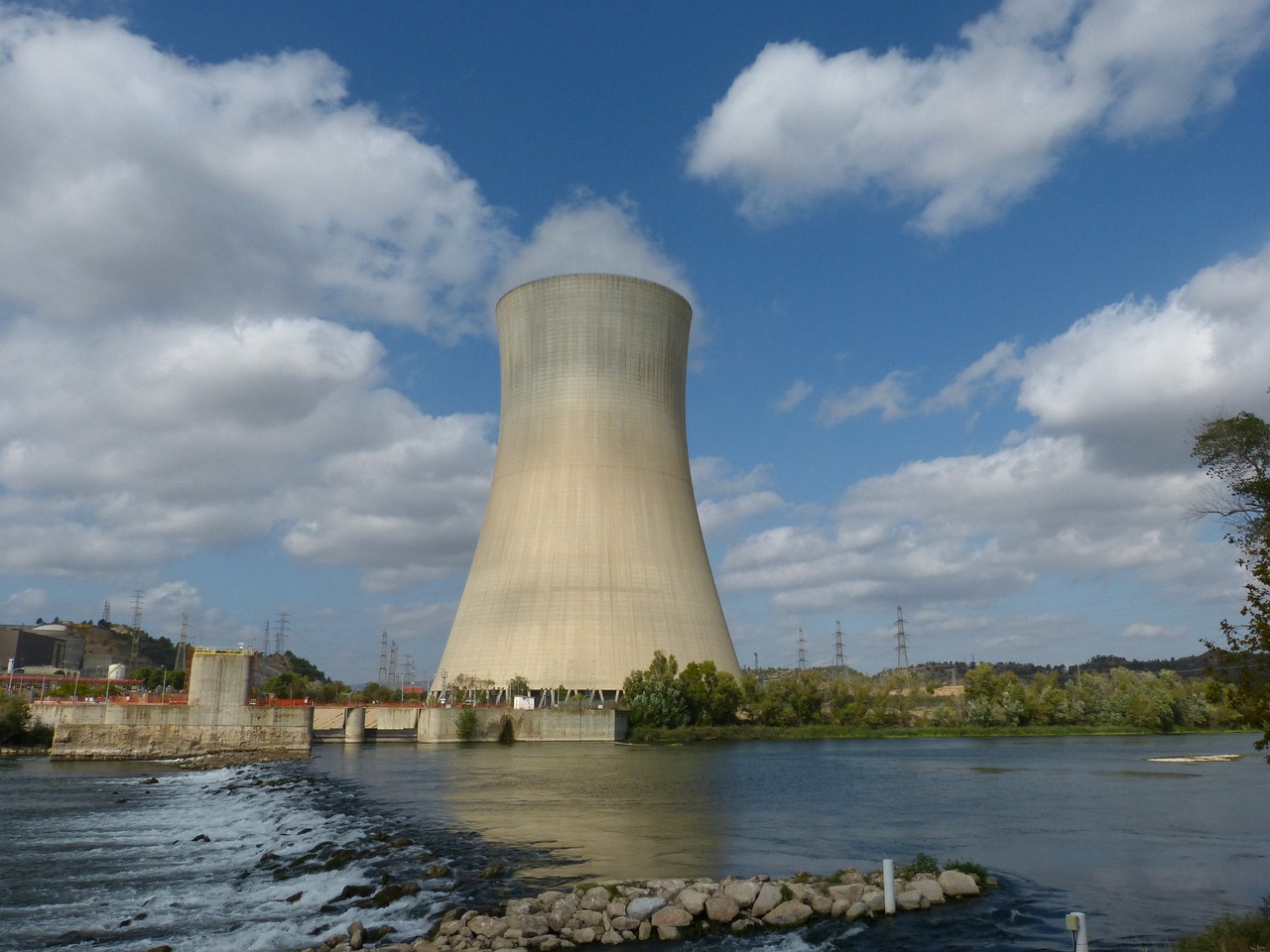
Efficiency of Energy Production
When we talk about energy production, one of the most critical aspects to consider is efficiency. It's not just about how much energy is produced; it's also about how effectively we convert raw materials into usable energy. In the battle between nuclear power and fossil fuels, efficiency plays a pivotal role that can sway opinions and influence policies.
Nuclear power is renowned for its high energy density. To put it simply, a small amount of nuclear fuel can produce a massive amount of energy. For instance, just one kilogram of uranium can generate as much energy as approximately 24,000 kilograms of coal. This astonishing energy output means that nuclear plants can operate at a very high capacity factor, often exceeding 90%. This means that they are generating electricity at full capacity for most of the time, making them a reliable source of energy.
On the other hand, fossil fuels like coal, oil, and natural gas also have their strengths in terms of efficiency, but they come with a caveat. While the technology for extracting and burning fossil fuels is well-established and often cheaper to implement initially, their overall efficiency can be significantly lower. For example, the thermal efficiency of coal-fired power plants typically ranges between 33% to 40%. This means that a considerable portion of the energy contained in coal is lost as waste heat, which is not the case with nuclear power.
To visualize the differences in efficiency, consider the following table that compares the energy output and efficiency of nuclear power and various fossil fuels:
| Energy Source | Energy Density (MJ/kg) | Typical Efficiency (%) |
|---|---|---|
| Nuclear (Uranium) | 24,000 | 90+ |
| Coal | 24 | 33-40 |
| Natural Gas | 50 | 40-60 |
| Oil | 42-47 | 30-40 |
As the table illustrates, nuclear power stands out not only for its superior energy density but also for its remarkable efficiency. This efficiency translates into fewer resources needed to produce the same amount of energy, which is a significant advantage in a world grappling with energy demands and environmental concerns.
Moreover, the efficiency of energy production doesn’t just impact the immediate output; it also has long-term implications for sustainability. The less energy we waste, the smaller our carbon footprint becomes. This is crucial as we move towards a future where renewable energy sources are becoming more prominent. In fact, the efficiency of nuclear power can complement renewable sources by providing a stable base load of energy, thereby reducing reliance on fossil fuels.
In conclusion, when evaluating the efficiency of energy production, nuclear power emerges as a frontrunner. Its high energy density and capacity factor make it a formidable competitor against fossil fuels. As society continues to seek cleaner and more sustainable energy solutions, understanding these efficiencies will be essential for informed decision-making in the energy sector.
- What is energy density? Energy density refers to the amount of energy stored in a given system or region of space per unit volume or mass.
- Why is efficiency important in energy production? Higher efficiency means less energy is wasted, leading to lower costs and reduced environmental impact.
- Can nuclear power help reduce reliance on fossil fuels? Yes, due to its high efficiency and low emissions, nuclear power can significantly reduce dependence on fossil fuels.
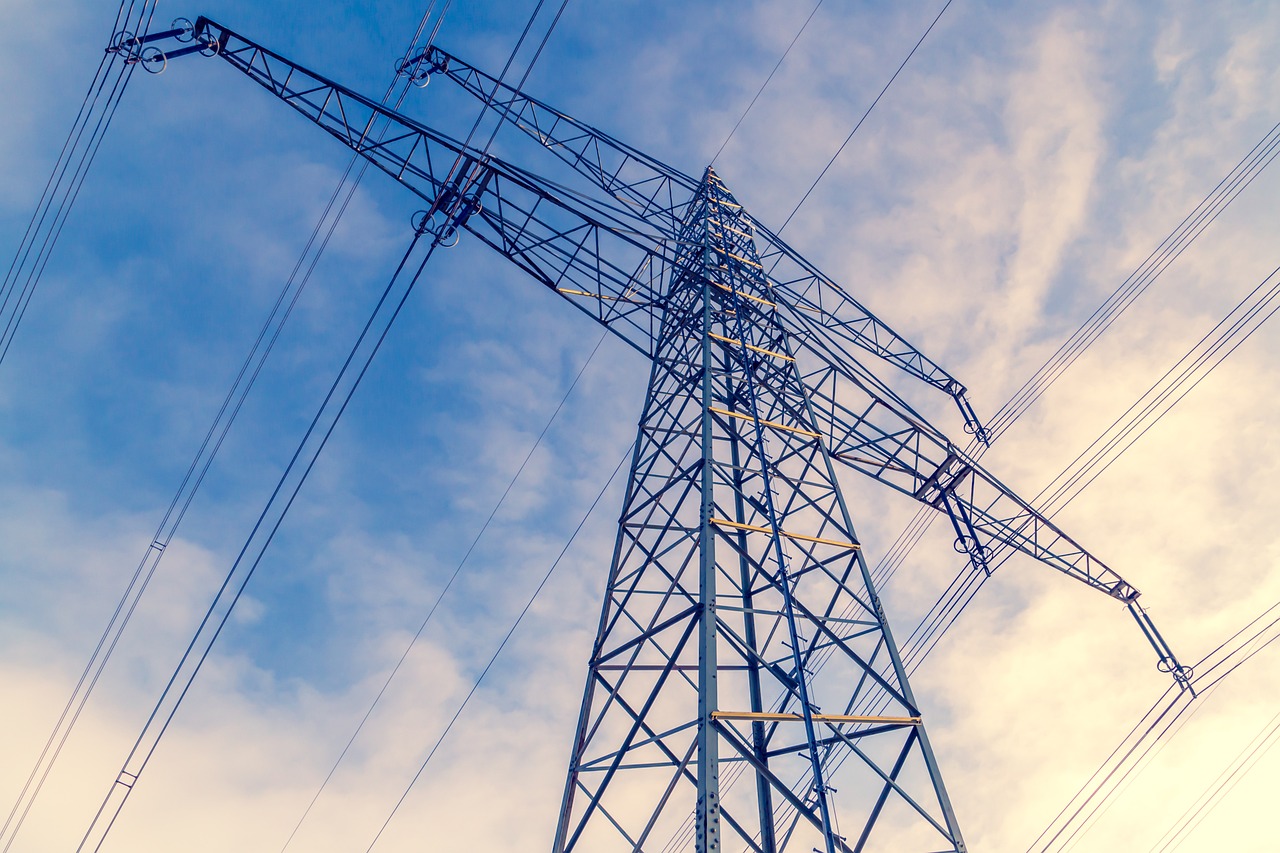
Safety Concerns
When it comes to energy production, safety is a vital consideration that cannot be overlooked. Both nuclear power and fossil fuels come with their own sets of risks, and understanding these is crucial for informed decision-making. Let’s dive into the safety concerns surrounding these two energy giants.
Nuclear power, while often hailed for its low greenhouse gas emissions, is not without its dangers. The potential for catastrophic accidents, such as the infamous Chernobyl disaster in 1986 or the Fukushima incident in 2011, raises significant alarm. These events serve as stark reminders of what can happen when safety protocols fail. The consequences of a nuclear accident can be devastating, not just for the immediate area but for global health and the environment. The radiation released can lead to long-term health issues, including cancer, and can render large areas uninhabitable for decades.
Additionally, the management of nuclear waste poses another serious safety challenge. Spent nuclear fuel is highly radioactive and requires secure storage for thousands of years. The long-term containment of this waste is a significant concern, as any leak or breach could lead to severe environmental contamination. Countries like the United States have struggled to find suitable long-term storage solutions, which raises questions about the overall sustainability of nuclear energy.
On the flip side, fossil fuels also present considerable safety risks. The extraction process—whether through drilling for oil or mining for coal—can be hazardous. Workers are often exposed to dangerous conditions, and the potential for accidents is high. For instance, oil spills can devastate marine ecosystems, while coal mining can lead to catastrophic mine collapses and health issues for workers due to inhalation of coal dust.
Moreover, the combustion of fossil fuels is a major contributor to air pollution, which poses significant health risks to the general population. The emissions from burning coal, oil, and natural gas include harmful pollutants such as sulfur dioxide, nitrogen oxides, and particulate matter, all of which can lead to respiratory problems and other health issues. The impact of fossil fuel combustion on climate change also cannot be ignored, as it contributes to extreme weather events that pose risks to human safety and infrastructure.
In comparing the safety of these two energy sources, it’s essential to consider not just the immediate risks but also the long-term implications. While nuclear power has the potential for catastrophic accidents, fossil fuels carry a heavy burden of ongoing health risks and environmental degradation. Ultimately, the debate over safety in energy production is complex and multifaceted, requiring careful consideration of both the short-term and long-term consequences of our energy choices.
To summarize, the safety concerns surrounding nuclear power and fossil fuels are significant and varied. Understanding these risks is crucial as society navigates the path toward sustainable energy solutions. As we move forward, it is imperative that we prioritize safety in our energy policies and practices.
Frequently Asked Questions
- What are the primary safety risks associated with nuclear power?
The main risks include the potential for catastrophic accidents, radiation exposure, and challenges in managing nuclear waste.
- How do fossil fuels impact worker safety?
Fossil fuel extraction can be hazardous, exposing workers to dangerous conditions and health risks from pollution and accidents.
- Is nuclear energy safer than fossil fuels?
While nuclear energy has severe accident risks, fossil fuels contribute to ongoing health issues from air pollution and environmental damage.
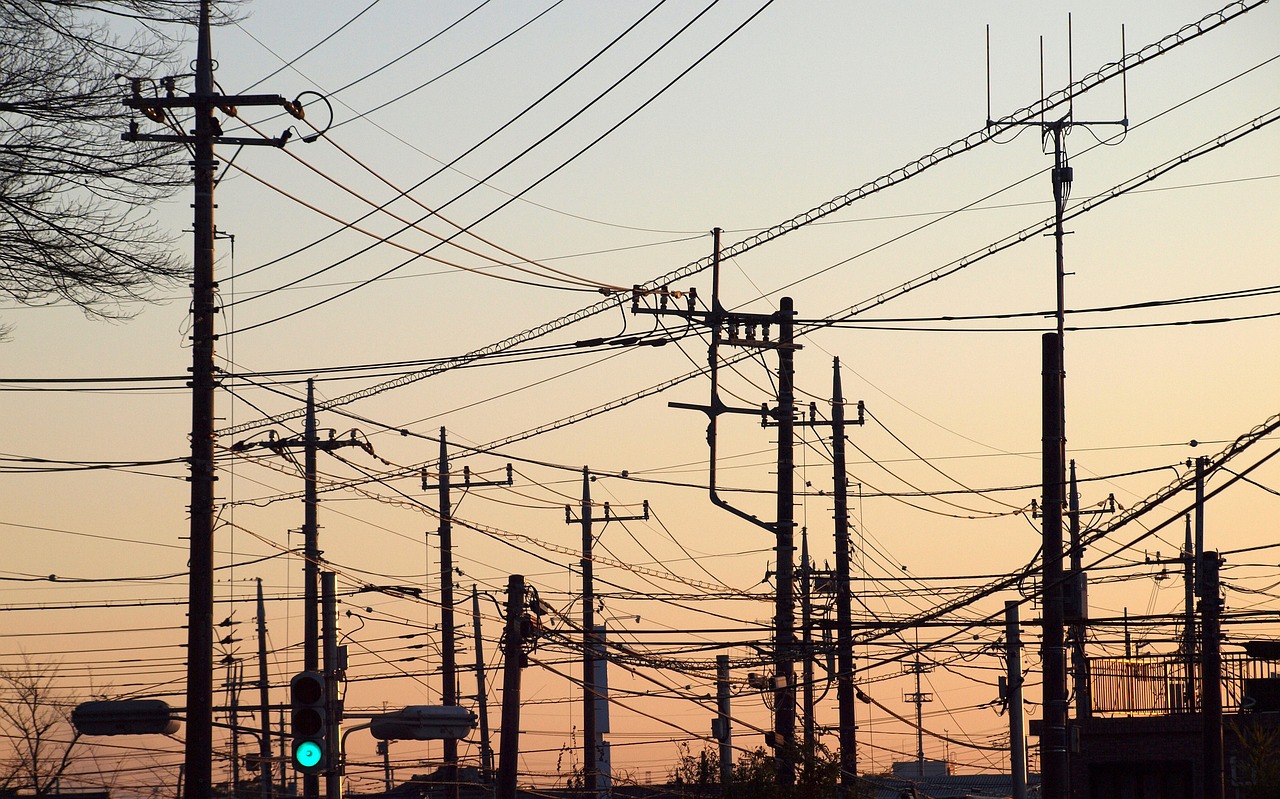
Economic Factors
The economic viability of energy sources is a pivotal aspect that influences their adoption and integration into our daily lives. When we compare nuclear power with fossil fuels, we uncover a complex landscape that encompasses construction costs, operational expenses, and long-term sustainability. Let's dive deeper into these elements to understand how they shape our energy choices.
To start, the initial investment required for nuclear power plants is significantly higher than that for fossil fuel facilities. Building a nuclear power plant can cost upwards of $6 billion to $9 billion, primarily due to stringent safety regulations and advanced technology requirements. In contrast, fossil fuel plants, particularly natural gas facilities, can be constructed for a fraction of that cost—often between $1 billion to $3 billion. This stark difference in upfront costs can deter investors from pursuing nuclear projects, despite their potential for long-term benefits.
However, once operational, nuclear power plants tend to have lower fuel costs and longer operational lifespans compared to fossil fuel plants. The operational costs of nuclear energy, which include maintenance and waste management, can be offset by the stable price of uranium and the efficiency of nuclear reactions. In contrast, fossil fuel prices can be volatile, influenced by market fluctuations and geopolitical tensions. This volatility can lead to unpredictable operational costs for fossil fuel plants, making them less appealing in the long run.
Another important economic factor to consider is the government subsidies that often favor fossil fuels. Many governments provide substantial financial support to the fossil fuel industry, which can skew the market in favor of these energy sources. This can create an uneven playing field, making it challenging for nuclear power to compete despite its lower emissions and potential for sustainable energy production. In recent years, however, there has been a shift towards recognizing the importance of nuclear energy in achieving climate goals, leading to increased investment and support.
When we look at the broader economic implications, it’s essential to consider the job market. The nuclear industry tends to create high-skilled jobs, often requiring advanced degrees and specialized training. In contrast, fossil fuel industries provide a wider range of employment opportunities, from skilled labor to less specialized roles. This difference can influence public opinion and policy decisions as communities weigh the benefits of job creation against environmental impacts.
To summarize the economic factors at play, let’s take a look at the following table that highlights key comparisons:
| Factor | Nuclear Power | Fossil Fuels |
|---|---|---|
| Initial Construction Cost | $6 billion - $9 billion | $1 billion - $3 billion |
| Operational Lifespan | 40-60 years | 30-50 years |
| Fuel Cost Stability | Stable | Volatile |
| Government Subsidies | Less common | Widely available |
| Job Creation | High-skilled jobs | Diverse job opportunities |
In conclusion, while nuclear power presents a higher upfront cost, its long-term benefits and stability can make it a more sustainable choice. However, the economic landscape is continually evolving, influenced by government policies, market trends, and public perception. As we strive for a cleaner energy future, understanding these economic factors will be crucial in shaping the energy strategies of tomorrow.
- What are the main economic advantages of nuclear energy? Nuclear energy offers lower operational costs and stable fuel prices compared to fossil fuels.
- Why do fossil fuels receive more government subsidies? Fossil fuels have historically been a significant part of the energy mix, leading to established political and economic support.
- How does job creation differ between nuclear and fossil fuel industries? Nuclear power tends to create high-skilled jobs, while fossil fuels offer a broader range of employment opportunities.

Public Perception
The perception of energy sources significantly influences energy policy and development. When it comes to nuclear power and fossil fuels, the public's view can often be shaped by a cocktail of historical events, media portrayal, and educational outreach. For instance, the catastrophic events at Chernobyl and Fukushima have left indelible marks on the public psyche, leading many to associate nuclear energy with danger and disaster. On the other hand, fossil fuels, despite their well-documented environmental consequences, have been ingrained in our society for over a century, making them seem like a more familiar and reliable option.
Interestingly, the narrative surrounding these energy sources is not static; it evolves with time and context. In recent years, as the urgency to combat climate change has intensified, there has been a noticeable shift in public opinion. Many are beginning to recognize that while nuclear power carries risks, it also offers a low-carbon alternative to fossil fuels, which are notorious for their greenhouse gas emissions. This duality creates a complex landscape where individuals weigh the potential benefits of nuclear energy against their fears and misconceptions.
Moreover, media representation plays a pivotal role in shaping public perception. Sensationalized reporting on nuclear accidents can overshadow the rigorous safety measures that have been implemented in the industry. Conversely, the media often downplays the environmental degradation and health risks associated with fossil fuel extraction and combustion. This disparity can lead to a skewed understanding of the true costs and benefits of each energy source.
Another factor influencing public perception is the ongoing dialogue about energy independence and national security. In many regions, fossil fuels are seen as a means to achieve energy autonomy, while nuclear power is often viewed with skepticism due to concerns about reliance on foreign technology and materials. This sentiment can further complicate the decision-making process for policymakers who must balance public opinion with the need for sustainable energy solutions.
To better understand how these perceptions manifest, consider the following table that summarizes key factors influencing public opinion on nuclear power versus fossil fuels:
| Factor | Nuclear Power | Fossil Fuels |
|---|---|---|
| Historical Events | Chernobyl, Fukushima | Oil Crises, Gulf Wars |
| Environmental Impact | Low emissions, waste concerns | High emissions, pollution |
| Media Representation | Focus on accidents | Focus on energy independence |
| Public Safety Concerns | Accident risks, waste management | Health risks from pollution |
In conclusion, public perception of nuclear power and fossil fuels is a multifaceted issue, influenced by a myriad of factors including historical context, media portrayal, and environmental considerations. As society grapples with the pressing need for sustainable energy solutions, it is crucial to foster informed discussions that demystify nuclear energy and critically assess the long-term implications of fossil fuel dependency.
- What are the main concerns regarding nuclear power? Many people worry about safety, particularly in the event of an accident, and the management of radioactive waste.
- How do fossil fuels impact the environment? Fossil fuels contribute significantly to air pollution and greenhouse gas emissions, which are major factors in climate change.
- Can nuclear power be considered a sustainable energy source? Yes, while it has its challenges, nuclear power produces low carbon emissions, making it a viable option for reducing climate impact.
- What role does media play in shaping public opinion on energy sources? Media coverage can greatly influence public perception, often highlighting dramatic events or crises while underreporting the environmental impacts of fossil fuels.
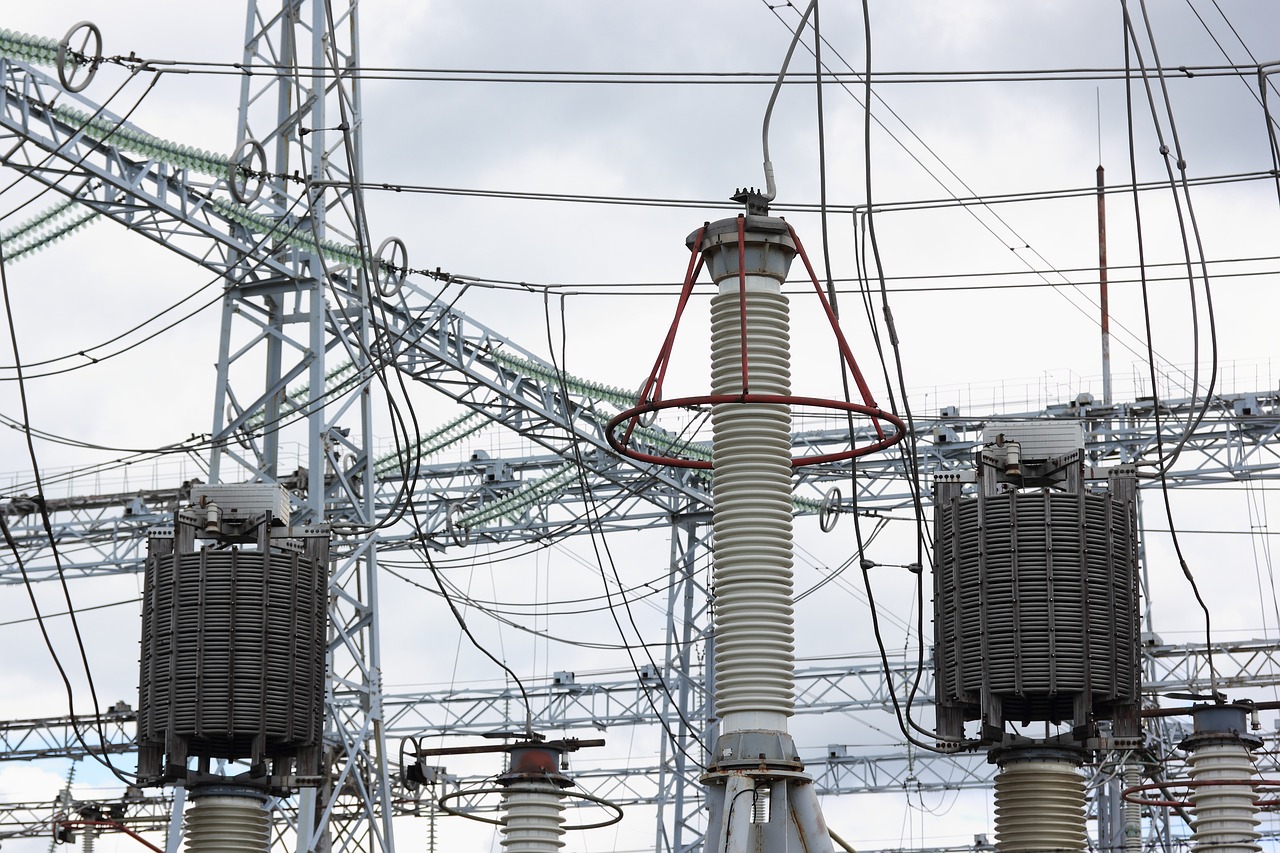
Regulatory Framework
The regulatory framework governing nuclear power and fossil fuels is a complex web of laws, standards, and guidelines designed to ensure safety, environmental protection, and efficient energy production. This framework varies significantly between the two energy sources, reflecting their unique challenges and public perceptions. For nuclear power, regulations are primarily focused on safety and waste management, given the potential risks associated with radiation and nuclear accidents. In contrast, fossil fuels face regulations aimed at mitigating environmental pollution and addressing the health impacts of extraction and combustion.
In many countries, nuclear energy is subject to stringent oversight by governmental bodies. For instance, in the United States, the Nuclear Regulatory Commission (NRC) is responsible for overseeing the construction and operation of nuclear facilities. The NRC enforces regulations that require rigorous safety assessments, emergency preparedness plans, and continuous monitoring of radiation levels. Additionally, the management of nuclear waste is heavily regulated to prevent contamination and ensure long-term storage solutions. This regulatory environment aims to maintain public trust and minimize the risks associated with nuclear energy.
On the other hand, fossil fuel industries are regulated by a range of environmental protection laws, which can differ significantly from one region to another. In the U.S., the Environmental Protection Agency (EPA) plays a critical role in enforcing regulations that limit emissions from power plants, oil refineries, and other fossil fuel operations. These regulations often include standards for air and water quality, requiring companies to adopt technologies that reduce pollutants. However, the enforcement of these regulations can be inconsistent, leading to debates about their effectiveness and the industry's commitment to environmental sustainability.
Furthermore, the regulatory landscape is constantly evolving in response to emerging technologies and changing public attitudes. For example, as renewable energy sources gain traction, governments are increasingly incentivizing the transition away from fossil fuels through subsidies and tax breaks. This shift is prompting fossil fuel companies to adapt to a more stringent regulatory environment that emphasizes sustainability. In contrast, advancements in nuclear technology, such as small modular reactors (SMRs), are being integrated into regulatory discussions to enhance safety and efficiency.
To illustrate the differences in regulatory approaches, the table below summarizes key regulatory aspects for both nuclear power and fossil fuels:
| Aspect | Nuclear Power | Fossil Fuels |
|---|---|---|
| Primary Regulatory Body | Nuclear Regulatory Commission (NRC) | Environmental Protection Agency (EPA) |
| Focus Areas | Safety, waste management, emergency preparedness | Emissions control, environmental impact, health standards |
| Public Engagement | High level of public scrutiny and involvement | Varies by region; often less engagement |
| Adaptation to Change | Slow due to stringent safety requirements | Rapid adaptation to market and environmental pressures |
In conclusion, the regulatory framework surrounding nuclear power and fossil fuels reflects their distinct risks, environmental impacts, and public perceptions. As society continues to grapple with the challenges of climate change and energy sustainability, these regulations will play a pivotal role in shaping the future of energy production. The ongoing dialogue between regulators, industry stakeholders, and the public is essential in creating a balanced approach that prioritizes safety, environmental protection, and technological advancement.
- What is the main purpose of energy regulations? Energy regulations aim to ensure safety, protect the environment, and promote efficient energy production.
- How do nuclear regulations differ from fossil fuel regulations? Nuclear regulations focus on safety and waste management, while fossil fuel regulations emphasize emissions control and environmental protection.
- Who regulates nuclear power in the United States? The Nuclear Regulatory Commission (NRC) is responsible for overseeing nuclear power in the U.S.
- What role does the Environmental Protection Agency (EPA) play? The EPA regulates emissions and environmental impacts of fossil fuel operations.
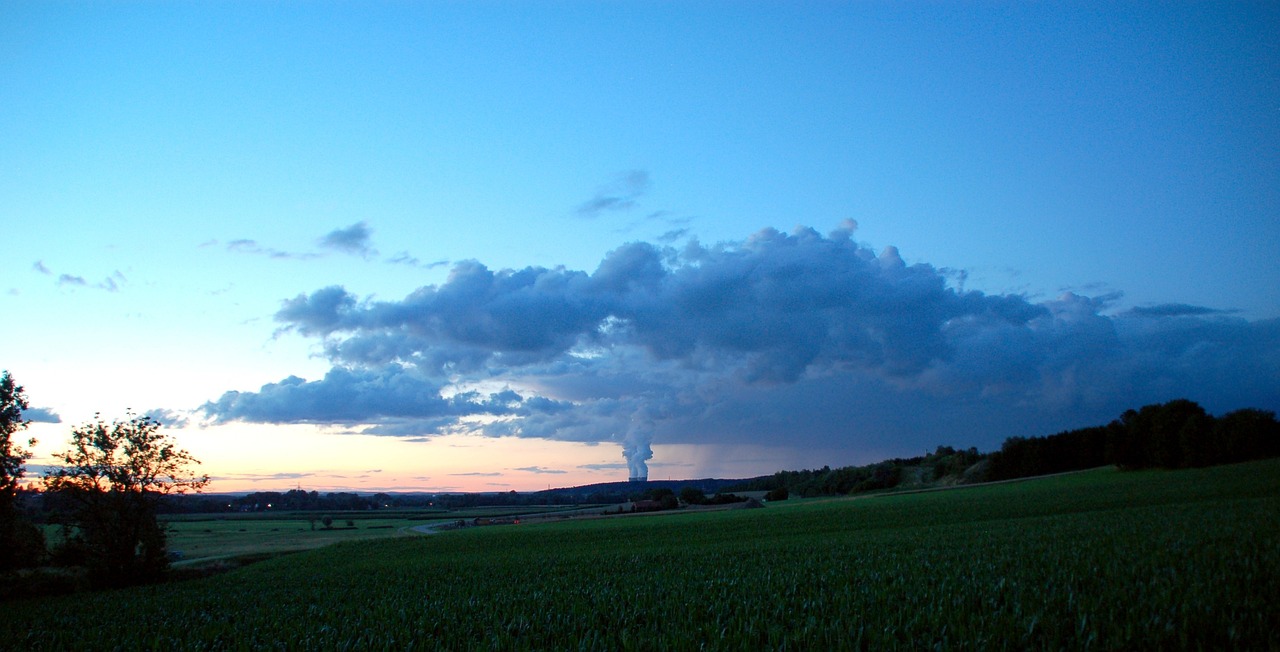
Technological Advances
In the ever-evolving world of energy production, play a pivotal role in shaping how we harness and utilize power. Both nuclear energy and fossil fuels have seen remarkable innovations that not only enhance efficiency but also address critical safety and environmental concerns. For instance, in the realm of nuclear power, advancements in reactor design have led to the development of Generation IV reactors, which promise to be safer, more efficient, and capable of utilizing different types of fuel, including spent fuel from previous generations. These reactors employ passive safety systems that can automatically shut down without human intervention, reducing the risk of catastrophic failures.
On the other hand, fossil fuel technologies have also made significant strides. The advent of carbon capture and storage (CCS) technology allows power plants to capture up to 90% of the carbon dioxide emissions produced during combustion. This technology is crucial in mitigating the environmental impact of fossil fuels, providing a bridge as we transition towards more sustainable energy sources. Furthermore, innovations in hydraulic fracturing and horizontal drilling have unlocked previously inaccessible oil and natural gas reserves, significantly increasing the efficiency of fossil fuel extraction.
Moreover, advancements in renewable energy integration are transforming the landscape for both nuclear and fossil fuels. Technologies such as smart grids and energy storage systems are enabling a more flexible and reliable energy supply, allowing for better integration of intermittent renewable sources like solar and wind. This is particularly important as we strive for a balanced energy mix that can meet growing global demand while minimizing environmental impact.
To illustrate the impact of these technological advancements, consider the following table that summarizes key innovations in both energy sectors:
| Energy Source | Technological Advances | Benefits |
|---|---|---|
| Nuclear Power | Generation IV Reactors, Passive Safety Systems | Increased safety, efficiency, and fuel utilization |
| Fossil Fuels | Carbon Capture and Storage, Enhanced Oil Recovery | Reduced emissions, improved extraction efficiency |
| Both | Smart Grids, Energy Storage Solutions | Better integration of renewables, enhanced reliability |
As we look to the future, the synergy between these technological advancements and the energy landscape will be crucial. The ongoing research and development in both sectors will not only dictate how we produce energy but also how we address the pressing challenges of climate change and sustainability. The question remains: will these innovations be enough to shift public perception and policy in favor of a more balanced energy approach? Only time will tell, but one thing is certain: the future of energy is bright, driven by innovation and the quest for sustainability.
- What are Generation IV reactors? Generation IV reactors are advanced nuclear reactors designed to be safer, more efficient, and capable of utilizing a broader range of fuel types.
- How does carbon capture work? Carbon capture technology captures carbon dioxide emissions from fossil fuel combustion and stores it underground to prevent it from entering the atmosphere.
- What is a smart grid? A smart grid is an electricity supply network that uses digital technology to monitor and manage the transport of electricity from all generation sources to meet the varying electricity demands of end-users.
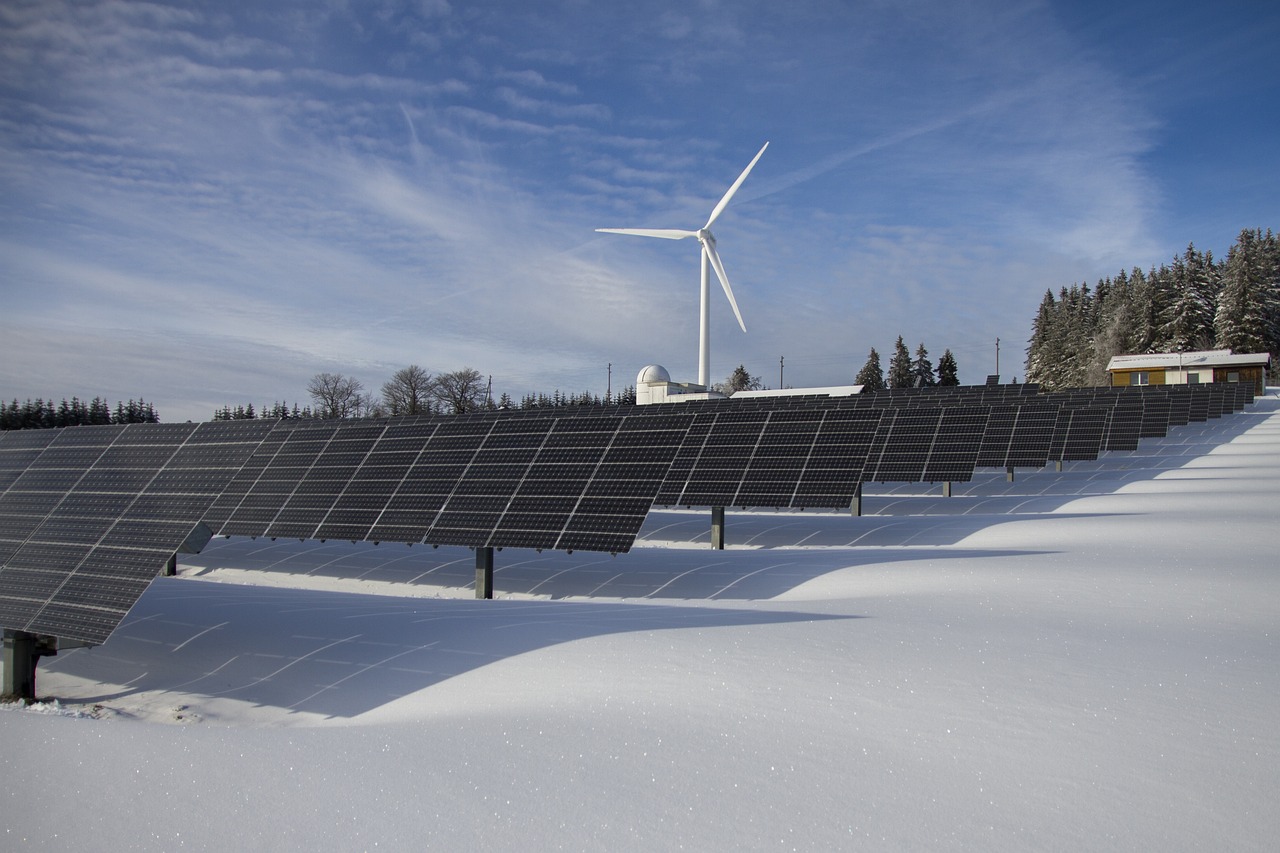
Global Energy Trends
The landscape of global energy is constantly evolving, driven by a myriad of factors including technological advancements, policy shifts, and changing consumer preferences. As we navigate through the 21st century, the roles of nuclear power and fossil fuels are being re-evaluated in light of pressing environmental concerns and the urgent need for sustainable energy solutions. One of the most significant trends is the gradual transition towards renewable energy sources, such as solar and wind, which are becoming increasingly viable alternatives to traditional fossil fuels. This shift is not merely a trend; it's a necessary evolution in our energy systems.
Interestingly, while fossil fuels have dominated the energy sector for decades due to their established infrastructure and relatively low costs, the global push for carbon neutrality has sparked a renewed interest in nuclear power. Countries are recognizing that to meet their climate goals, they must balance the reliability of nuclear energy with the need to reduce greenhouse gas emissions. This balancing act is crucial as we look to the future of energy production.
A key aspect of this transition is the increasing investment in nuclear technology. New designs, such as small modular reactors (SMRs), promise to make nuclear power safer and more adaptable to different energy needs. These innovations are essential as they aim to address the long-standing concerns related to nuclear waste and safety. In parallel, fossil fuel industries are also innovating, with carbon capture and storage (CCS) technologies emerging as a potential solution to mitigate their environmental impact.
To better understand how these energy sources fit into the global energy mix, let's take a look at some statistics:
| Energy Source | Current Share of Global Energy (2023) | Projected Share by 2030 |
|---|---|---|
| Nuclear Power | 10% | 12% |
| Fossil Fuels | 80% | 75% |
| Renewables | 10% | 25% |
As indicated in the table, while fossil fuels still dominate the global energy landscape, the rise of renewable energy is undeniable. This shift is not only influenced by environmental policies but also by consumer demand for cleaner energy options. People are increasingly aware of their carbon footprints and are pushing for changes that align with their values. The question arises: how can we accelerate this transition while ensuring energy security and economic stability?
Furthermore, international agreements, such as the Paris Agreement, are compelling nations to rethink their energy strategies. Countries are now setting ambitious targets for reducing greenhouse gas emissions, and many are looking to nuclear power as a stable, low-carbon energy source that can complement renewables. This dynamic interplay between energy sources is shaping the future of our energy systems.
In conclusion, the global energy trends indicate a pivotal moment in our approach to energy production. The interplay between nuclear power, fossil fuels, and renewables is complex, yet it is clear that a diversified energy portfolio will be essential for achieving a sustainable future. As we move forward, the focus must remain on innovation and collaboration to tackle the challenges that lie ahead.
- What is the primary advantage of nuclear power over fossil fuels? Nuclear power produces minimal greenhouse gas emissions during operation, making it a cleaner alternative.
- Are there risks associated with nuclear energy? Yes, risks include potential accidents and challenges related to radioactive waste management.
- How are renewable energy sources impacting fossil fuel usage? The rise of renewables is leading to a gradual decline in fossil fuel dependency as countries seek to reduce carbon emissions.
- What role do government policies play in energy trends? Government policies significantly influence energy investments, research, and development, shaping the future energy landscape.

Future of Energy
The is a topic that sparks intense debate and curiosity. As we stand on the brink of a new era, the question arises: how will nuclear power and fossil fuels fit into our energy landscape? With the world grappling with climate change and the urgent need for sustainable solutions, we must consider the roles these energy sources will play in the coming decades.
Nuclear power, often hailed as a clean energy alternative, has the potential to significantly reduce greenhouse gas emissions. Unlike fossil fuels, which release a plethora of harmful pollutants into the atmosphere, nuclear energy produces minimal direct emissions. However, the challenges of nuclear waste disposal and public apprehension about nuclear accidents remain significant hurdles. As technology advances, we may see innovations such as small modular reactors (SMRs) that promise enhanced safety and efficiency, making nuclear power a more attractive option for future energy needs.
On the other hand, fossil fuels continue to dominate the global energy market, primarily due to their established infrastructure and relatively low cost. Yet, as the world shifts towards more sustainable practices, the long-term viability of fossil fuels is increasingly questioned. The economic implications of transitioning away from fossil fuels are vast. Governments are beginning to implement policies that promote renewable energy sources, which could further diminish the role of fossil fuels in the energy mix.
Moreover, the integration of renewable energy sources, such as solar and wind, is reshaping the energy landscape. These technologies are becoming more affordable and efficient, making them viable alternatives to both nuclear and fossil fuel energy. As we look to the future, a hybrid energy model may emerge, blending the reliability of nuclear power with the sustainability of renewables, creating a balanced approach to energy production.
As we consider the potential roles of nuclear power and fossil fuels, it’s essential to recognize the influence of public perception and policy. Social attitudes toward energy sources can dramatically affect their adoption. Public support for nuclear energy has fluctuated, often influenced by high-profile accidents and media coverage. Conversely, the environmental impacts of fossil fuels are becoming more widely recognized, leading to increased advocacy for cleaner alternatives.
In summary, the future of energy will likely be characterized by a complex interplay between nuclear power, fossil fuels, and renewable energy sources. While nuclear energy holds promise for reducing emissions, its acceptance hinges on technological advancements and public trust. Fossil fuels, despite their current prevalence, face growing scrutiny as the world shifts toward sustainability. Ultimately, the energy landscape will evolve based on a combination of innovation, policy, and societal values, paving the way for a more sustainable and resilient energy future.
- What is the primary advantage of nuclear power over fossil fuels? Nuclear power produces minimal greenhouse gas emissions compared to fossil fuels, making it a cleaner option for energy production.
- Are there safety concerns associated with nuclear power? Yes, while advancements in technology have improved safety, concerns about nuclear accidents and waste disposal remain significant issues.
- How do renewable energy sources fit into the future of energy? Renewable sources like solar and wind are becoming increasingly cost-effective and are expected to play a vital role in the transition to sustainable energy systems.
- Will fossil fuels continue to be a major energy source? While fossil fuels currently dominate the market, their future is uncertain due to environmental concerns and the push for cleaner energy alternatives.
Frequently Asked Questions
- What are the main environmental impacts of nuclear power compared to fossil fuels?
Nuclear power produces minimal greenhouse gas emissions during operation, making it a cleaner alternative to fossil fuels, which release significant amounts of carbon dioxide and other pollutants. However, nuclear waste management poses its own environmental challenges, including long-term storage and potential contamination risks.
- How efficient is nuclear power compared to fossil fuels?
Nuclear power is highly efficient, generating a large amount of energy from a small amount of fuel. In contrast, fossil fuels require more resources to produce the same energy output, leading to greater resource consumption and environmental degradation. This efficiency makes nuclear a compelling option for meeting high energy demands.
- What safety concerns are associated with nuclear power?
While nuclear power plants are designed with numerous safety features, risks still exist, such as potential meltdowns and the challenge of managing radioactive waste. On the other hand, fossil fuel extraction and combustion can lead to accidents, air pollution, and health risks for workers and nearby communities.
- How do the economic costs of nuclear power compare to fossil fuels?
The initial construction costs for nuclear power plants are typically higher than those for fossil fuel facilities. However, once operational, nuclear plants can be more cost-effective due to lower fuel costs and longer operational lifespans. Additionally, fluctuating fossil fuel prices can impact their long-term economic viability.
- What is the public perception of nuclear power versus fossil fuels?
Public opinion on nuclear power is often influenced by historical events, such as accidents and media portrayal. While some view nuclear energy as a necessary part of a sustainable future, others remain wary due to safety concerns. In contrast, fossil fuels are often seen as more familiar but are increasingly criticized for their environmental impacts.
- What regulations govern nuclear power and fossil fuels?
Nuclear power is subject to strict regulatory frameworks to ensure safety and environmental protection, with oversight from various governmental bodies. Fossil fuel operations also face regulations, but these can vary widely by region and may not be as stringent, leading to differing levels of environmental protection.
- What recent technological advances have been made in nuclear power?
Recent advancements in nuclear technology include the development of small modular reactors (SMRs) and improvements in waste recycling methods. These innovations aim to enhance safety, efficiency, and sustainability, positioning nuclear energy as a more viable option in the future energy landscape.
- How do global energy trends impact the future of nuclear power and fossil fuels?
Global energy trends indicate a shift towards renewable energy sources, which could impact the roles of both nuclear power and fossil fuels. As countries aim for lower carbon emissions, the future may see a more balanced energy mix, where nuclear power plays a crucial role in providing stable, low-emission energy alongside renewables.
- What does the future hold for nuclear power and fossil fuels?
The future of energy is evolving, with nuclear power potentially playing a key role in transitioning to sustainable energy systems. However, the economic, environmental, and technological factors will continue to influence the balance between nuclear and fossil fuel use, shaping energy policies and investment decisions worldwide.

